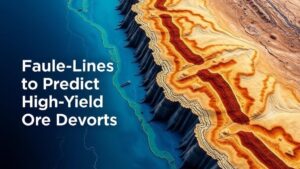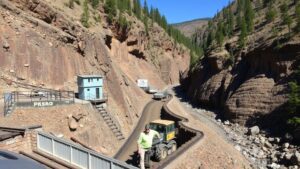Identifying Heavy Mineral Trails in Coastal and Beach Sands for Gold Recovery
Identifying Heavy Mineral Trails in Coastal and Beach Sands for Gold Recovery
The quest for gold recovery has evolved considerably over the years, particularly in coastal and beach environments where heavy minerals are often concentrated. By understanding heavy mineral trails, miners can enhance gold recovery strategies and optimize their efforts in these dynamic landscapes. This article explores the identification, significance, and methodology of detecting heavy mineral trails in coastal sands, aiming to provide actionable insights for both amateur and professional prospectors.
The Importance of Heavy Minerals in Gold Recovery
Heavy minerals are typically defined as minerals with a specific gravity greater than 2.85 g/cm³. In coastal and beach environments, these minerals tend to be more concentrated due to natural processes such as wave action and sediment sorting. Minerals such as ilmenite, zircon, and monazite often accompany gold in these deposits.
Understanding the presence and distribution of heavy minerals is crucial for several reasons:
- They serve as indicators for gold hotspots, directing prospectors towards high-yield areas.
- Heavy minerals can be extracted and processed to obtain additional revenue streams.
- Studying their distribution patterns can offer insights into historical geologic processes and sediment transport.
Geological Processes Influencing Heavy Mineral Trails
The formation of heavy mineral trails is primarily influenced by geological factors such as sedimentation, erosion, and transport. Key processes include:
- Wave Action: Waves can create powerful currents that sort sediments based on weight, leading to the deposition of heavier minerals, including gold.
- Beach and Dune Dynamics: Coastal winds can rework sands, leading to the accumulation of heavy minerals in particular areas.
- River Transport: Rivers can carry sediments from upstream areas, concentrating heavy minerals near river mouths where they meet the ocean.
These dynamic processes are crucial for understanding how to identify and exploit heavy mineral trails effectively.
Techniques for Identifying Heavy Mineral Trails
Several techniques can be utilized to identify heavy mineral trails in coastal sands, including geological mapping, sampling, and laboratory analysis.
- Geological Mapping: Detailed geological maps can illustrate the distribution of heavy minerals across different coastal regions. Maps highlight areas where geological processes have been favorable for gold deposition.
- Field Sampling: Systematic sampling along beach and coastal regions is vital. Collecting sand samples at various depths helps ascertain the concentration and type of heavy minerals present.
- Laboratory Analysis: Techniques such as heavy liquid separation and magnetic separation can isolate heavy minerals from lighter sediments, allowing for precise identification and quantification.
Case Studies: Successful Gold Recovery in Coastal Sands
Several regions worldwide have seen successful gold recovery by focusing on heavy mineral trails within coastal sands.
- Australian Coastlines: The Australian coastal region has showcased numerous successful gold recovery operations through the identification of heavy mineral trails. Notably, the sands of New South Wales are rich in heavy mineral deposits, with reports indicating that these minerals can contain gold concentrations as high as 2g/m³.
- California Beaches: Californias unique coastal geography has led to the accumulation of heavy minerals, including gold, near river mouths and tidal zones. Prospectors utilizing magnetic and heavy liquid separation methods have realized considerable success in recovering gold from the sands.
Challenges and Considerations
Despite promising techniques and methodologies, challenges do exist in identifying and exploiting heavy mineral trails for gold recovery:
- Environmental Regulations: Prospectors must navigate complex environmental regulations that govern beach and coastal mining activities. Understanding local laws is essential to ensure compliance.
- Seasonal Changes: Coastal environments can change drastically depending on the season. Storms and high tides can redistribute heavy minerals, necessitating continual monitoring.
- Accuracy of Techniques: The effectiveness of identifying heavy mineral trails heavily relies on the accuracy of sampling and analysis techniques. Inaccurate data can lead to suboptimal recovery efforts.
Actionable Takeaways
To successfully identify heavy mineral trails in coastal and beach sands for gold recovery, prospectors should consider the following steps:
- Conduct thorough geological mapping and familiarize themselves with local sediment dynamics.
- Use systematic field sampling strategies to collect representative sand samples.
- Use advanced laboratory techniques for mineral analysis and concentration determination.
- Stay informed about environmental regulations and maintain sustainable practices during mining efforts.
By following these guidelines, prospectors can not only enhance their gold recovery objectives but also contribute to responsible mining practices in fragile coastal environments.


